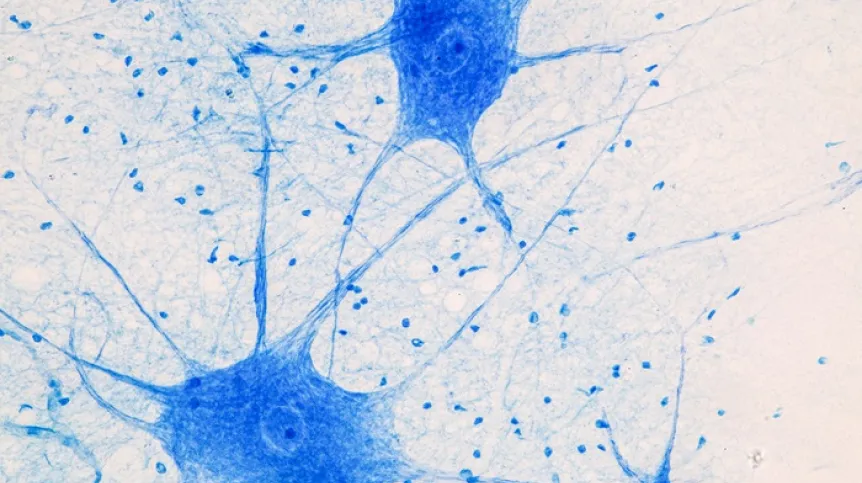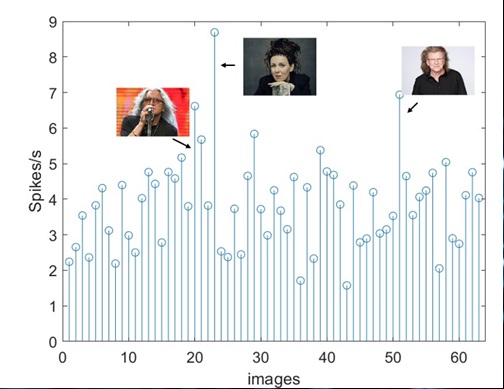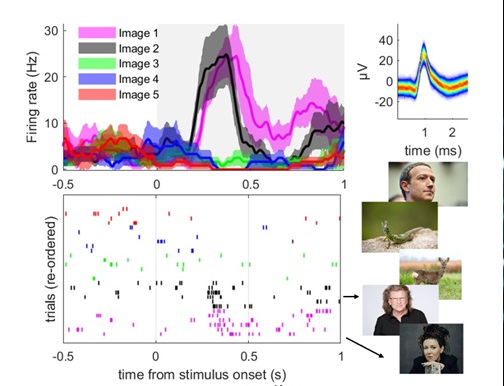
Scientists are now able to monitor individual neurons in a living human brain.
If we were to compare the human brain to a country, so far the most common studies have concerned the functioning and role of entire provinces or cities, i.e. the average work of large groups of neurons has been analysed. The lives of individual 'citizens' have been overlooked.
MEMORY CONFORMISTS AND REBELS
For example, in an EEG one electrode simultaneously collects electrical signals coming from hundreds of thousands of neurons that synchronise their work. In turn, fMRI, with a not very high resolution, shows the difference in blood supply to large parts of the brain when it performs certain tasks.
However, if we know that a certain part of the brain is active during a given task, it does not mean that all neurons there work identically. If we want to properly understand how the system works, we should know not only the resultant of what entire populations of neurons are doing, but also what free agents are doing.
The work of individual brain cells has been tested on living animals, but there are many issues - such as language, awareness, memory - that cannot be tested on animals.
This time, in the publication in Nature co-authored by Dr. Kamiński from the Nencki Institute of the Polish Academy of Sciences, researchers investigated the functioning of individual neurons responsible for working memory. They took advantage of the situation when epilepsy patients were temporarily implanted with electrodes in the brain as part of preparation for surgery. These electrodes collected information not only about brain waves and their source, but thanks to additional tips - microelectrodes - they also recorded the stimulation of individual neurons. This allowed to observe the functioning of the human brain on a microscale.
CONCEPT CELLS FOR RENT
A very interesting issue is how the brain encodes information about people: a person's own grandmother, friends, famous people. It has been observed that there are individual brain cells that are activated only when we hear, read or see a photo of a specific person.
For example, the so-called Jennifer Aniston neuron was observed in a US study. It was activated when the subject looked at photos of the actress (but not always, and sometimes it also reacted to another actress from the TV series Friends). In one of his studies, Dr. Jan Kamiński also investigated the reaction to photos of various celebrities. For example, he found neurons that responded only to photos of Volodymyr Zelensky, as well as neurons that were activated only when looking at photos of Polish celebrities Olga Tokarczuk, Zbigniew Wodecki and Krzysztof Markowski. This means that there is a place somewhere in the brain where associations concerning various people come together - in this case, possibly local artists.

In the study described in Nature, scientists analysed the work of individual neurons and entire groups of neurons during tasks requiring memorizing many images at once (people, animals, landscapes).
'We recorded single neurons in the human medial temporal and frontal lobe while patients maintained multiple items in their working memory', says the research.
DISAPPEARING WORK IN WORKING MEMORY
What is working memory exactly? There is information we need right now, but soon we will not need it anymore: a BLIK number; how many eggs we have already added to scrambled eggs; when we have to leave to catch the bus; how much petrol we can buy for 20 euros; how to arrange words into neat wishes... There must be a place in the brain where - like chalk on a blackboard - we temporarily store fleeting information to use it for something in a moment, and then - either copy it into an important diary or erase it completely. For this, we need working memory - (formerly called short-term memory) - our mental RAM.
HOW IS YOUR WORKING MEMORY? UNDER CONTROL!
Cognitive control is needed to maintain desired information in working memory. We have to pay attention to what we want to record, even if a lot of other things are going on around us. However, how we decide what we remember and what we do not - at the level of neurons - has been unclear.
The international team including the Polish researcher revealed the secrets of such processes in their publication in Nature.
'Here we show that interactions of frontal control and hippocampal persistent activity are coordinated by theta–gamma phase-amplitude coupling (TG-PAC)', say Jonathan Daume and colleagues.

'The interactions that occur between brain waves and the activity of individual neurons are important in the part of working memory that is responsible for control and allocation of resources, but not for maintaining information in working memory', says Dr. Kamiński.
He adds that the research he conducted is basic research - so it has no direct applications. However, it is conceivable that understanding how working memory works will one day help develop more effective treatments for people with ADHD.
'In ADHD, there is a problem with the efficient allocation of resources to working memory and with attention control. The patients have a limited ability to control what enters their working memory and what does not’, says Dr. Jan Kamiński.
Another potential application is the creation of brain-computer interfaces. 'If we want, for example, to be able to encode information into the mind, and not just control the cursor with thoughts, we need to understand working memory as well as possible, because it is the window in which we perform mental operations and through which we transmit information to consciousness', says Dr. Kaminski.
PAP - Science in Poland, Ludwika Tomala
lt/ zan/ kap/
tr. RL













